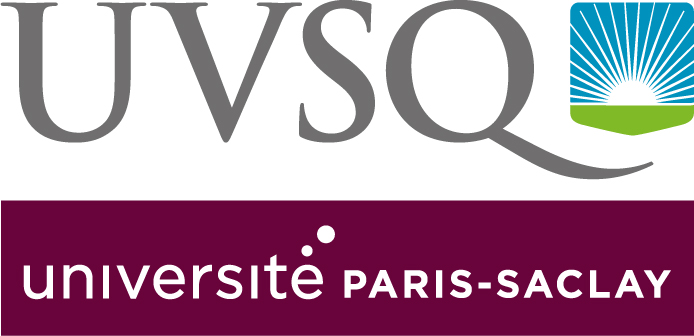-
Aeronautics - Aerospace - Defence
-
Chemistry - Materials
-
Complex systems and software engineering
-
Digital
-
Energy, Ecology, Environment
-
Social - Societal - Solidarity Innovation
Atmospheres, Environments, Space Observations Laboratory (LATMOS)
Research unit
The laboratory, with a strong spatial and instrumental component, specializes in the study of the physical and chemical processes of terrestrial, planetary and stellar atmospheres (exosphere, heliosphere, mesosphere, stratosphere, troposphere) and in the interaction between the terrestrial atmosphere and surfaces (terrestrial, ocean, ocean surface and continental). Innovation in the design of complex ground-based instruments from the poles to the equator and in space and in software development enables it to position itself on regional, national and international projects in collaboration with CNES, other space agencies and the industrial world.
Innovation themes
- Energy, Ecology, Environment
- Digital
- Instrumentation, electronics, robotics and cobotics
- Complex systems and software engineering
- Telecom, converged network, fixed and mobile, internet of things
- Software design, big data, cloud, high performance computing
- Modelling and simulation
- Digital modelling, data visualisation, Human - Machine Interaction
- Chemistry - Materials
- Aeronautics - Aerospace - Defence
- Environment, energy and food
- Social - Societal - Solidarity Innovation
- Climate (observation - monitoring), environmental management, eco system
- Plasma
- Photonics - optical materials, application nanotechnology
- Organic (heavy, fine)
- Industrial process engineering
- Standards, regulations and public actions
- Embedded systems, critical systems
- Geoscience (Seismology, Geothermal, Geology...)
- Materials and processes
11, boulevard d'Alembert
Quartier des Garennes
78280 GUYANCOURT
Expertises
- studies of physico-chemical, dynamic and radiative processes and their coupling
- studies of mechanisms for modifying the environment, air quality and climate, involving atmospheric chemistry processes (gases, aerosols)
- sun-climate relationships (photochemistry/ stratospheric dynamics)
Planetology :
- composition and dynamics of atmospheres (planets and comets) and their coupling, Ionized atmosphere/neutral atmosphere interactions
- surface and sub-surface characteristics (telluric planets and comets)
- molecular composition of low-density atmospheres, exobiology
- exobiology
Study of the sun and the interstellar medium:
- borders, interstellar gas
- diameter, irradiance, solar spectrum
- analysis of data obtained from ground networks during international campaigns and by space instruments (physico-chemical study of atmospheres, physical characterization of surfaces and subsurfaces, electromagnetic interaction - natural environment, plasmas of the solar system)
- comparison of experimental data with modelling and numerical and physical simulation results
- instrumental design (lidar, radar, IR, visible and UV spectrometry, mass spectrometer)
- simulation of planetary atmospheres in the laboratory
Applications sectors
- Aeronautics / Aerospace
- Electronic / photonics
Total number of employees
Number of researchers : 60
Number of doctoral students : 30
Equipment(s) open to collaboration
- radars/lidars
- optical spectrometers and photometers
- microwave radiometers
- roughometer
- thermal camera
- vacuum and thermal instrumental enclosure
- optical spectrometer (UV IR)
- monochromator
- solar simulator
- glass workshop
Industrial:
To be discussed in the context of collaborations.
Valuation offer
- MARBLL, Double edge technique (LIDARs wind)
- Grayt (Optical beam calculation)
Know-how :
- construction of space and airborne instruments (LIDAR for atmospheric measurements, RADAR precipitation and cloud)
Projects examples
- development of numerical codes on the dynamic processes and atmospheric composition of the earth and planets and their magnetospheres
Industrial and scientific relations
Scientific collaborations
- France: ONERA, CNES, GREMI (Orléans), LISA (Créteil), LGPM (Chatenay Malabry), DTINSU, LOCEAN, LPO, Ifremer, SAFIRE, IETR, LPC2E (Orléans), Météo France, INRA (Orléans), IEF, LOA, CEA Astrophysical Service
- Europe: ESA, University of Barcelona, University of Padua, FFI (Olso), University of Roma 3 (Italy), University of Dresden (Germany), University of Reading (UK), University of Leicester (UK)
- International: Tokyo University (EarthCare project), The Russian Space Research Institute (IK), NASA, DLR, JAXA, Roscosmos, SWRI (USA), Yale University, JPL (USA), Naval Research Laboratory, GSFC NASA Earth and Technology (USA), High Altitude Observatory (NCAR), Yale University, Canadian Space Centre
Private collaborations
- collaboration with several companies
Establishments of affiliation


